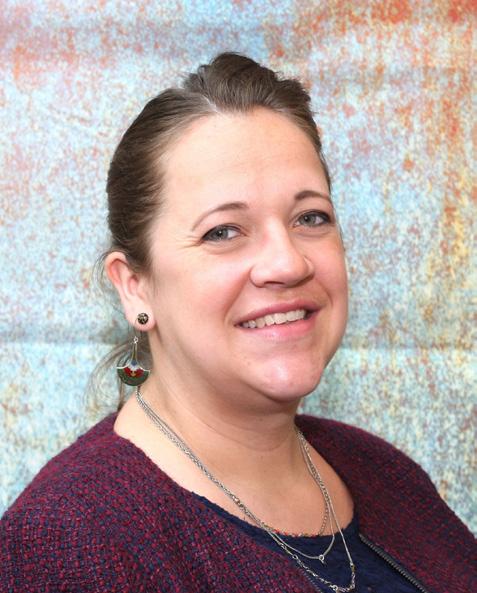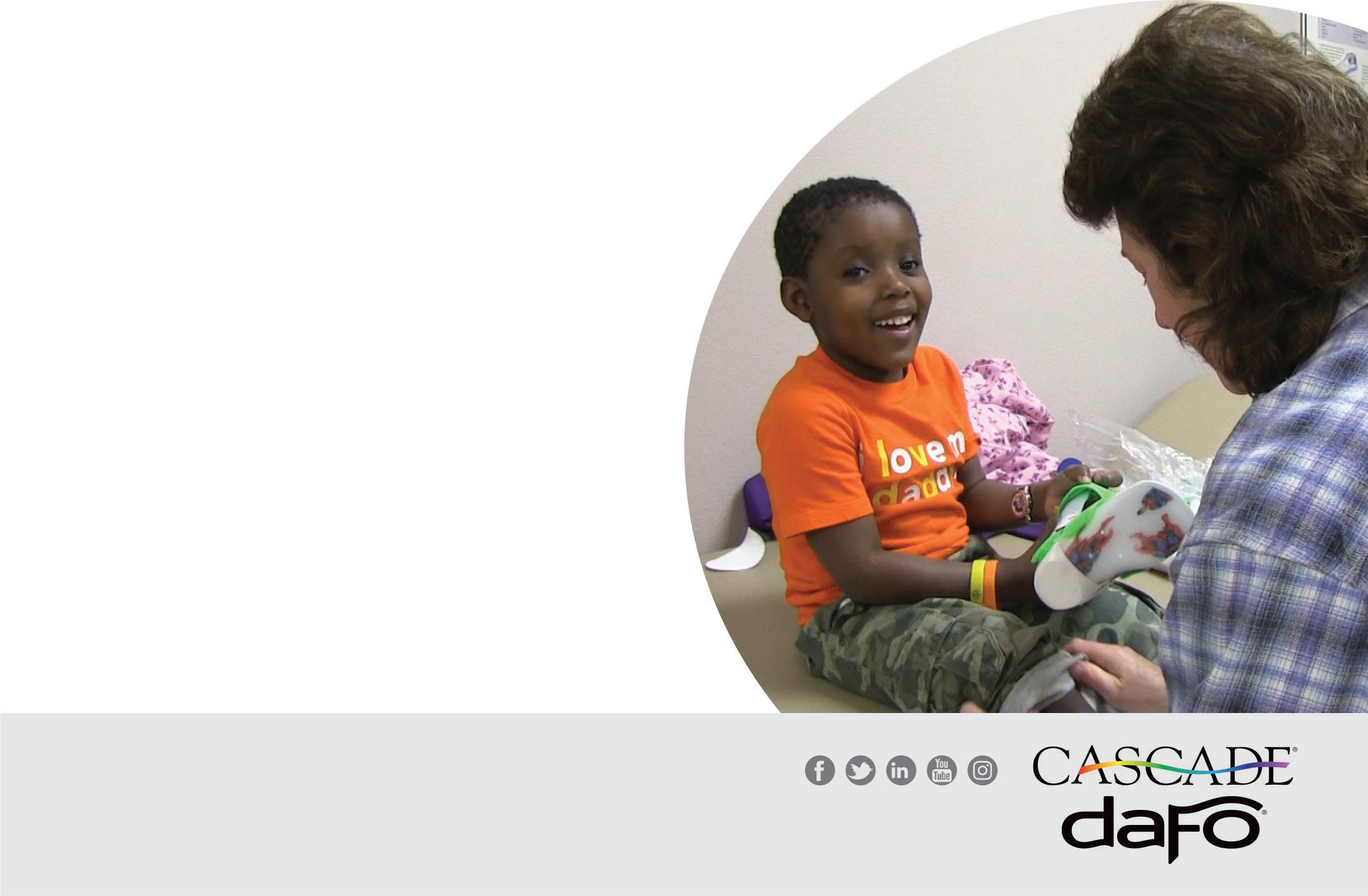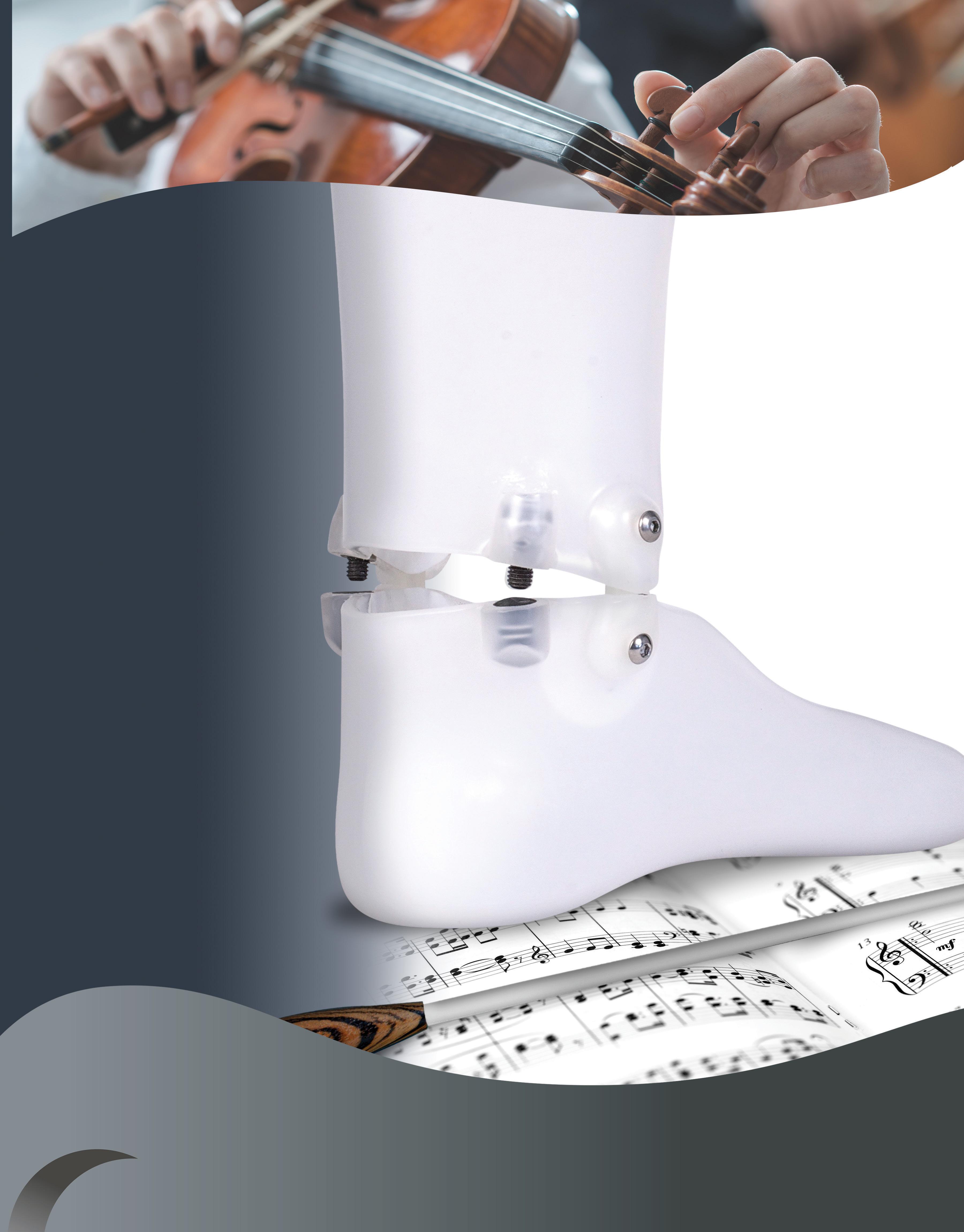
7 minute read
PRINCIPAL INVESTIGATOR
from February 2021 O&P Almanac
by AOPA
Making an Impact
Clinician studies O&P outcomes data and what it means for patients, practitioners
O&P Almanac introduces individuals who have undertaken O&P-focused research projects. Here, you will get to know colleagues and healthcare professionals who have carried out studies and gathered quantitative and/ or qualitative data related to orthotics and prosthetics, and find out what it takes to become an O&P researcher.

ADUAL-CERTIFIED O&P clinician, Taavy Miller, PhD, CPO, brings strong scientific skills in health economics and clinical expertise to her role as a research scientist in the Department of Clinical and Scientific Affairs at Hanger Clinic. “I leverage my knowledge and experience in using real-world data to capture when, where, and why patients with functional impairment and chronic diseases utilize health services along their journey to better understand the health outcomes and value of health services,” says Miller, who is well-versed in quantitative and qualitative data analysis. “In addition, I have experience in patient-reported outcomes assessing health utility and qualitative research.”
Given her background, it comes as no surprise that Miller plays a critical role in the IMPACT studies, a collection of research reports published by Hanger in collaboration with researchers, clinicians, and academic institutions. These studies assess outcomes among individuals with commercial health insurance, and have demonstrated the economic benefit that timely and appropriate prosthetic services have on patient outcomes, according to Miller.
In the most recently published study—the IMPACT 2—Miller worked closely with Hanger Clinic’s Shane R. Wurdeman, PhD, CP, FAAOP(D), as well as researchers from the University of North Carolina at Charlotte’s Department of Public Health. They analyzed data on 510 patients with lower-limb amputations to evaluate how receipt of a prosthesis affects overall healthcare utilization. Emergency department (ED) use, a common proxy for healthcare utilization, was assessed in the context of the timing of receipt of a lower-limb prosthesis following amputation, as well as not receiving a prosthesis.
Miller and her cohorts found that, across all age groups, individuals who received an early prosthesis—within three months following amputation— were 48 percent less likely to use the ED compared to those who did not receive a prosthesis. They also found that the percentage of ED use as a measure of overall healthcare utilization appears to have an upward trend as the time from surgery to prosthesis receipt increases. The findings were published in PM&R: The Journal of Injury, Function, and Rehabilitation.
Miller led the study from conceptualization through executing the data analysis and writing the manuscript.
“The IMPACT 2 study is about assessing the influence that receiving a prosthesis may have on the potential health service resource utilization. While a lower-limb amputation may include high costs, long-term use of services, and even a burden to a healthcare system, provision of a prosthesis may mitigate the burden from an economic perspective,” explains Miller. “As other studies have shown, certain services or interventions can reduce resource utilization, thereby demonstrating the value of the service.” For example, for someone with a lower-limb amputation, “a prosthesis empowers an individual to be more functionally independent, prevents injurious falls, and can improve cardiovascular health.”
Drawn to Research
Miller first decided to explore the field of O&P research soon after earning her master’s degree from Georgia Institute of Technology. She is passionate about equitable access to O&P services, “given the connection between practice, policy, Patient outcomes and real-world data have become my focus as a way to assess the value of O&P services and devices.
—TAAVY MILLER, PhD, CPO
and research evidence—yet it is difficult to demonstrate effectiveness and value of a device or service when empirical evidence is lacking,” she explains.
As a new clinician-in-training, Miller found that trying to justify care plans or recommendations—and not being able to find the research needed to explain why or how a device would be beneficial for patients—could be frustrating. “While O&P services are essential to millions of people’s health and function globally, we have a dearth of published evidence supporting what may seem logical to orthotists and prosthetists,” she says. Measuring and assessing patient outcomes is one of the best ways to communicate to other key stakeholders in the decision-making process, Miller adds.
Last October, Miller earned a doctorate in health services research from the University of North Carolina at Charlotte. Her dissertation, titled, “The Value of Prosthetic Rehabilitation for Current and Potential LowerLimb Prosthetic Users,” leveraged information from a commercial claims database and patient functional outcomes data. Assessing the effectiveness, efficiency, and equity of O&P devices on an individual and population level is important to establish the economic value of O&P services, according to Miller.

Miller also has worked on several other projects that utilize clinical outcomes data, including assessing injurious falls and mobility. Another recent study in the MAAT series (Hanger’s
Mobility Analysis of AmpuTees research studies) was an assessment of mobility across the lifetime. “The MAAT 7 study establishes reference values for mobility based on etiology for lower-limb prosthesis users.”
In yet another key study, Miller and the Hanger research team published in early 2020 an analysis of a customized upper-extremity short-form survey using the Patient-Reported Outcomes Measurement Information System (PROMIS) measurement tool. “This study was important and impactful to demonstrate the reliability of the customized upper-extremity PROMIS short survey,” she says. “It is critical to measure and capture our patients’ voices and experiences in order to facilitate shared decision making and communication.”

Long-Term Benefits
Miller, who is kept busy by a 1-year-old daughter when she’s not working, believes research into health economics
Studying the Economic Value of Early Prosthetic Intervention
Taavy Miller, PhD, CPO, was the lead author of Hanger Clinic’s first IMPACT study in early 2020: “The Impact Study: Impact of Time to Receipt of Prosthesis on Total Healthcare Costs 12 Months Postamputation,” by Miller; Rajib Paul, PhD; Melinda Forthofer, PhD; and Shane R. Wurdeman, PhD, CP, FAAOP(D).
In this study, published in the American Journal of Physical Medicine and Rehabilitation, the authors concluded that the clinical benefits of prosthetic rehabilitation can serve to potentially reduce other nonprosthetic costs, and that early delivery of a prosthesis is associated with reduced overall direct healthcare costs, as shown in the table below.
Cost Result of Time to Prosthesis
GROUP X
Did not receive prosthesis
$125,492
GROUP A
Received prosthesis between 0-3 months
$99,409
GROUP B
Received prosthesis between 4-6 months
$123,253
GROUP C
Received prosthesis between 7-9 months
$119,372
GROUP D
Received prosthesis between 10-12 months
$198,789
and outcomes will benefit patients in terms of individual care. These types of studies “will reduce barriers to critical technology, inform policy and clinical practice guidelines (CPGs), and ultimately improve health outcomes as individuals receive appropriate and timely O&P rehabilitation services,” says Miller. As the Hanger research team continues to work on assessing the value of O&P services, “we will be able to grow awareness of the benefits of orthotics and prosthetics and the expertise of O&P healthcare providers.”
She also notes that some of the lessons learned from research during the COVID-19 crisis parallel the O&P research drive: “As we are currently seeing the power and benefit of epidemiology-based or populationlevel studies in the efforts on COVID, it is similar to how we apply the same methods to the O&P populations,” she says. “Generating evidence based on real-world data and patient outcomes will inform our field and shape CPGs.” Many payors reference CPGs, she says, and are interested in assessing how providing O&P services can increase their efficiency while improving patient outcomes.
Looking to the future, Miller and her colleagues will continue to analyze patient outcomes among individuals with amputations—and expand those studies to include patients that use ankle-foot orthoses, spinal devices, and more. “Another goal will be to capture health utility data as a measure of patient outcomes and to demonstrate effectiveness of O&P services.”
The most pressing issue, going forward, is to ensure that patients have equitable access to devices, according to Miller. “As the demands increase for value-based outcomes and real-world evidence, it is imperative we continue to evaluate the impact of prosthetic and orthotic services. Determining and demonstrating value will help patients improve access to appropriate, high-quality, and beneficial O&P devices in a timely manner.”









